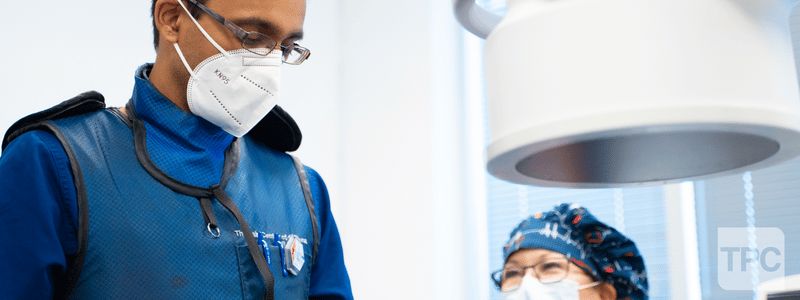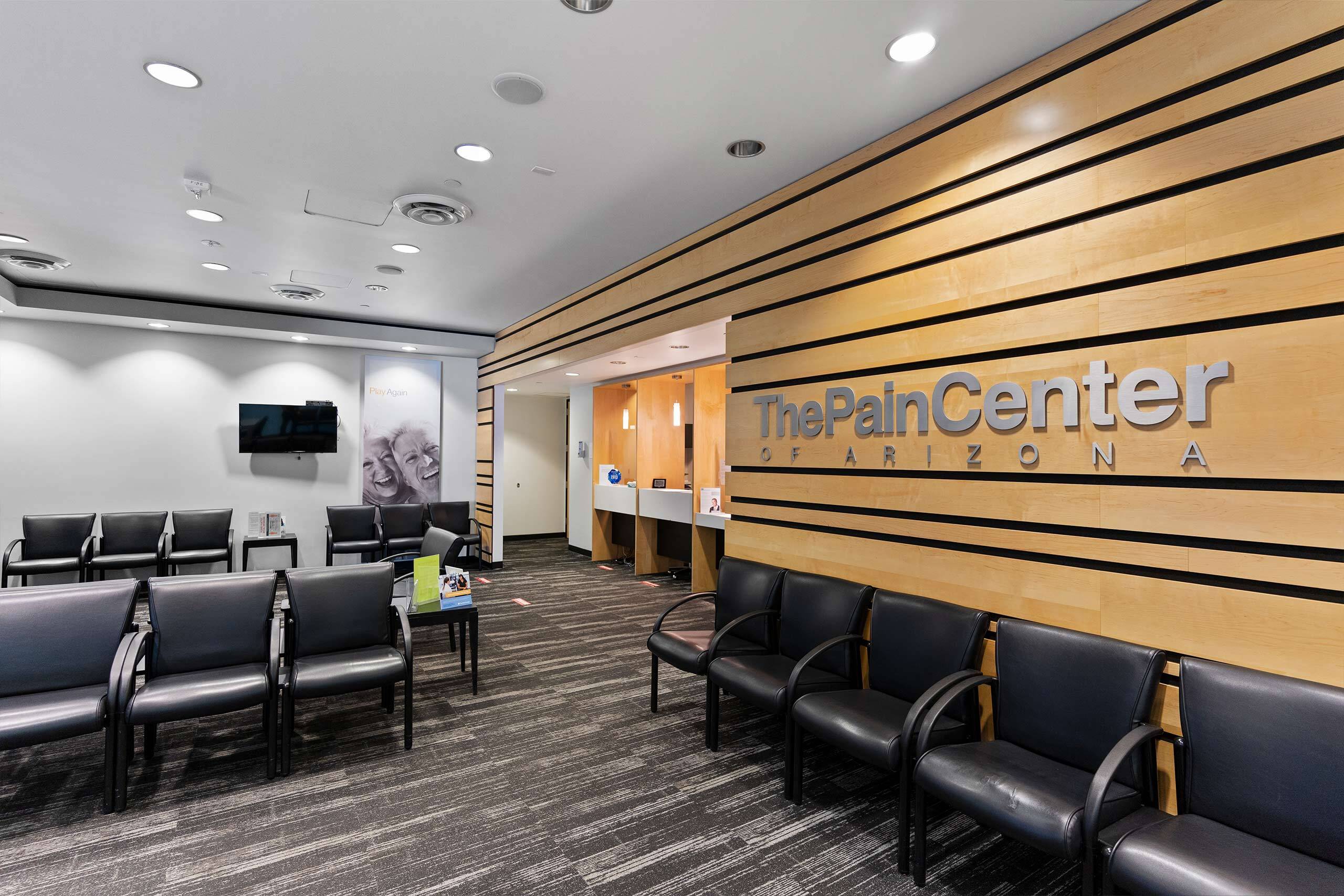Intrathecal Pain Pump
An intrathecal pain pump is a pain medication delivery system that sends treatment to the spinal cord. This device is surgically implanted under the skin in the abdomen, and delivers medication through a catheter that is send directly to the spinal cord. The intrathecal pain pump allows patients to be in control of their symptoms, while protecting them from addiction and other negative side effects. The pump is programmed by a pain management specialist to release medication over a certain period of time. The physician may change its programming if the needs of the patient change. Intrathecal pain pumps may be recommended for patients suffering from failed back surgery syndrome (FBSS), cancer pain, arachnoditis, chronic pancreatitis, and more.


What is Intrathecal Pain Pump?
An intrathecal pain pump is a long-term pain medication delivery system that sends treatment to the spinal cord.
Who typically needs one?
Patients who could benefit from an intrathecal pain pump for overall pain relief include those with conditions of:
- Arachnoiditis
- Cancer
- Chronic pain
- Chronic pancreatitis
- Failed back surgery syndrome (FBSS)
- Complex regional pain syndrome
- Causalgia
What medications are normally used in a pain pump?
Medications used in a pain pump include:
- Baclofen – for muscle spasms, neuropathic pain, and spasticity.
- Morphine – to treat chronic pain.
- Hydromorphone – a morphine alternative to relieve pain.
- Ziconotide – for severe chronic pain, another morphine alternative.
How Does Intrathecal Pain Pump Work?
The pump implant is surgically placed under the skin in the abdomen and delivers medication through a catheter that is sent directly to the spine, stopping the pain signals being sent to the brain from nerves surrounding the spinal cord.
The intrathecal pump allows patients to be in control of their symptoms while protecting them from addiction and other negative side effects.
The pump is programmed by a pain management specialist to release medication over a certain period of time. The physician may change its programming if the needs of the patient change.
Intrathecal pain pumps may be recommended for patients suffering from failed back surgery syndrome, cancer pain, arachnoiditis, chronic pancreatitis, and more.

Expectations and Recovery
Expect 6-8 weeks to fully recover. There will likely be discomfort and limitations on your movement, but they should resolve fairly quickly.
What are Symptoms Typical of Full-Body Pain?
Whole-body pain ranges from sharp, dull, aching, to stabbing and throbbing pain. Different areas of your body will range in tenderness as well.
Get medical help immediately if you are having trouble breathing, experiencing dizziness, muscle weakness, or stiffness in your neck along with a high fever.
What are the Common Causes of Full-Body Pain?
Underlying conditions and causes of full-body pain include:
- Muscle aches from intense exercise or overuse
- Injury
- Arthritis
- Fibromyalgia
- Viral infections (like the flu or other illnesses)
- Poor circulation or cardiac disorders
- Hypothyroidism
- Painful menstruation
- Lupus or other autoimmune conditions
- Lyme disease
- Stress and anxiety
- Depression
- Insomnia
- Inactivity (either contributing to or caused by pain)
- Certain vitamin deficiencies (like vitamin D)
- Side effects of prescription medications (e.g. statins)
- Genetic mutations
- Physical or emotional traumas
- Nerve damage
- Opioid-induced hyperalgesia
- Other underlying conditions
Other Conservative Treatments for Full-Body Pain
Other procedures used to treat full-body pain symptoms include:
- Nerve Blocks
- Therapeutic nerve blocks contain local pain medications that can control acute pain.
- Steroid Injections
- Injections of dexamethasone (a steroid) help reduce pain and inflammation. It can be very effective for cases of arthritis, rheumatoid arthritis, and osteoarthritis.
- Neuromodulation
- Neuromodulation treatments use low-voltage electrical pulses to block pain signals sent to your brain.
Alternative treatments can be utilized to treat plenty of pain symptoms, such as relaxation therapy, breathing techniques, supplements, acupuncture, chiropractic adjustments, massage, meditation, and yoga.
How Does TPC Intrathecal Work?
TPC Intrathecal is a minimally invasive solution for patients with otherwise chronic and refractory pain that has failed conservative therapies. Sometimes, TPC Intrathecal can also be used in our cancer pain population. What’s unique about TPC Intrathecal is its mode of delivery. TPC Intrathecal places a catheter into the spinal fluid space, delivering a small amount of medication 24 hours a day, seven days a week.
We find the right medicine, and we find the right dosing for you, but the 24/7 delivery is unparalleled. What’s also unique is the “oral-to-intrathecal ratio,” which is about 300-to-1, meaning 300 milligrams of morphine taken by mouth is the exact same as one milligram of morphine directly injected into the spinal fluid space. This also means a potential for 300 times less potency of negative side effects from the medication. So not only do we have medicine that’s being delivered 24/7, we have a microdose amount that can be delivered to you with fewer side effects. This can be utilized in the non-cancer demographic and our cancer pain patients.

Expectations and Recovery
The wonderful thing about TPC Intrathecal is that it comes with a trial. You come into a TPC environment, and we place a small little microdose of the appropriate medicine into the spinal fluid space and watch you for several hours and see how you do.
Does it help relieve your pain?
Do you have any issues with side effects?
Once we have had a successful trial, we bring you back under live fluoroscopic guidance and implant a small reservoir under the skin that delivers you the selected medicine 24/7.
TPC Intrathecal is an amazing solution for patients with otherwise chronic and refractory pain that have failed all of those conservative therapies.


Get the care you need within 24 hours*
We know when you’re looking for relief for your chronic pain, you can’t wait any longer than you already have. This is why we can schedule you with an appointment within 24 hours at most of our pain centers across the Valley, so you can start your journey to life-long pain relief as soon as tomorrow.



